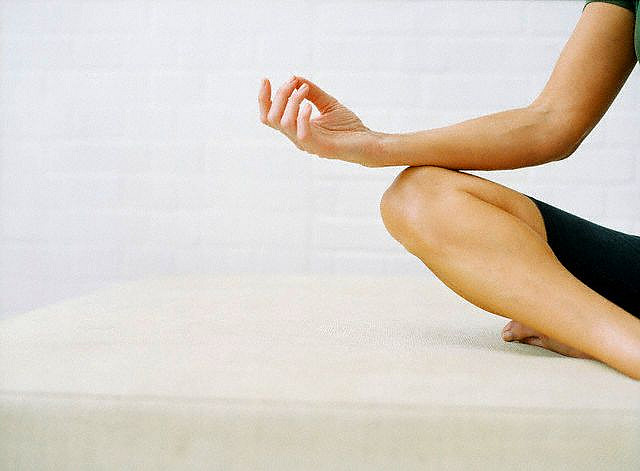How to Give Yourself a Break Physically - By Lori Deschene
How to Give Yourself a Break Physically
1. Allow yourself a little extra sleep, whether it’s by going to bed a half-hour earlier or by sleeping in an extra fifteen minutes and then skipping your usual morning coffee stop.
2. Take a day off from exercising if you usually run, go to the gym, or participate in some type of aerobic class.
3. Skip the stairs and take the elevator or escalator—sometimes it’s perfectly OK to choose the path of least resistance!
4. Replace strenuous exercise with something less intense, like restorative yoga.
5. Relax in a sauna or steam room to relax your muscles and sweat out chemicals that build up in your body.
6. Utilize a detoxifying cleanse to clear out toxins and give your digestive organs a break.
7. Take a break from alcohol, processed food, and sugar if a cleanse feels too extreme.
8. Get a massage or trade massages with someone you love. Massages are not only relaxing; they’ve also been proven to minimize anxiety, boost the immune system, and reduce depression and anxiety.
9. Take a long, hot bath to take weight off your weary muscles and joints.
10. Be mindful of your posture at your desk at work and take breaks to walk around and stretch. This one is smart on any day—hunching over our computers can cause major back and neck pain!
How to Give Yourself a Break Mentally
11. Take some time to meditate, even if it’s just for five minutes.
12. Use a deep breathing technique to calm your nervous system and clear your thoughts.
13. Give yourself a complete day without any financial worries; put your statements and bills in a drawer and save all eBills for tomorrow. (Trust me—they won’t go anywhere. Just don’t make this one a consistent practice!)
14. Set aside some time to play and be childlike.
15. Sing, paint, dance, or otherwise express yourself creatively. It’s awfully hard to stress and over-think when you’re engaged in something fun and expressive.
16. Go outside and immerse yourself in nature. Feel the ground or grass underneath your feet and focus on being present on enjoying your environment and the scenery.
17. Close down the multiple tabs on your computer screen and instead single-task. If you’re writing, write. If you’re editing a video, edit. Give yourself permission to get into a state of flow and let all distractions slip away.
18. Indulge in a guilty pleasure. Read a trashy magazine, go shopping, drink a latte, or do something else that always pulls you out of your head—most things are fine in moderation!
19. Take a day off from negative, draining people—even the ones you love. If your downer cousin needs your help, you can call her back tomorrow.
20. Simply sit. Choose to do nothing—don’t read, watch TV, surf the web, or in any way consume information. Just be.
How to Give Yourself a Break Emotionally
21. Metaphorically release emotions. Michelle Chambers offered a few strong ideas to let go of negative feelings, including using window crayons to write them on windows, mirrors, and shower tiles.
22. Practice observing your feelings instead of getting caught up in them, as I explored in the post How to Deal with Uncomfortable Feelings and Create Positive Ones.
23. Utilize progressive muscle relaxation, which involves tensing and then relaxing one muscle group at a time, starting with your face and then working down to your feet.
24. Count successes. Make a note of all the things you’ve done well, and give yourself permission to be proud instead of dissatisfied with what you haven’t done.
25. Replace regrets with dreams. Whenever you start thinking about what you should have done, shift your focus to what you plan to do now. It’s far more empowering and a lot less draining!
26. Create a worry window—20 minutes in the morning and early evening, for example. If you start stressing at a different time, remind yourself that you can worry all you want once it’s time.
27. Make it a label-free day. Every time you catch yourself judging yourself or a situation as bad or inadequate—things that always cause anxiety—consciously choose to avoid labeling anything. It’s a lot easier to stay calm when we limit our negative self talk.
28. Cry if you need to and are able. I’ve written about the benefits of crying before—it can help you release chemicals and hormones and create a more relaxed, positive state of mind.
29. Write down the things you’re grateful for. It doesn’t need to be a list of traditional blessings. It can include your morning coffee or the fact that your disagreeable coworker called in sick. Identifying the things that have brought us joy is a powerful way to create more.
30. Eliminate should for a day. Every time you catch yourself getting caught up in how you should be or things should be, tell yourself, “It is what it is.” Once we accept what is we’re in a much better place to create things as we’d like them to be.
How to Give Yourself a Break from Technology
31. Make a conscious decision to spend the first portion of your morning tech-free. Don’t power up your computer or turn on the TV. Instead try some suggestions from Srinivas Rao’s post How to Wake Up Every Morning on Top of the World.
32. Commute without technology. Instead of listening to voicemails or tweeting on your iPhone, read a physical book or write in your journal. Use this small window of time to connect with yourself.
33. Take a completely tech-free hour—turn your cell phone off, shut down your computer, and put your iPod in a drawer.
34. Plan unproductive downtime by taking a walk, for example. Research shows this type of disconnected time is crucial to learning and forming memories.
35. Simplify email so that you spend less time checking messages and more time engaging in activities that feel fulfilling.
36. Identify what you’re really seeking from technology—whether it’s acceptance, acknowledgment, or stimulation—and then look for ways to get that without logging on (as previously mentioned in my post about last year’s Wisdom 2.0 Conference).
37. Store gadgets in a place where you can’t see them when you’re not using them so they don’t in any way consume your energy or thoughts.
38. Technology fast on a weekend day. This probably isn’t an option during the week—and I’ll admit this is challenging for me even on the weekend—but it’s worth trying: a day without any gadgets.
39. Give your technology a bed time. I know from experience how pre-bed web surfing can negatively impact sleep. Decide in advance at what point you’ll put all your gadgets away, and then choose other relaxing activities before you head to sleep.
40. Decide for a day that nothing is urgent. Emails, phone calls, text messages—unless it’s an actual life-or-death situation, it isn’t a catastrophe and it can wait until tomorrow.
Source : - lori deschene (tinybuddha.com)



Comments
Post a Comment